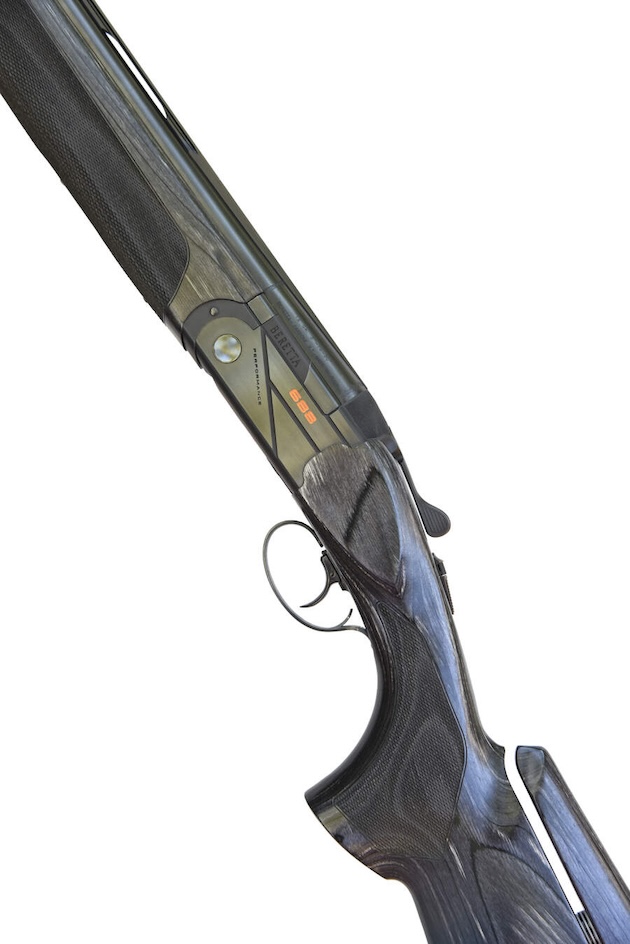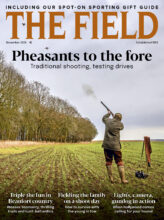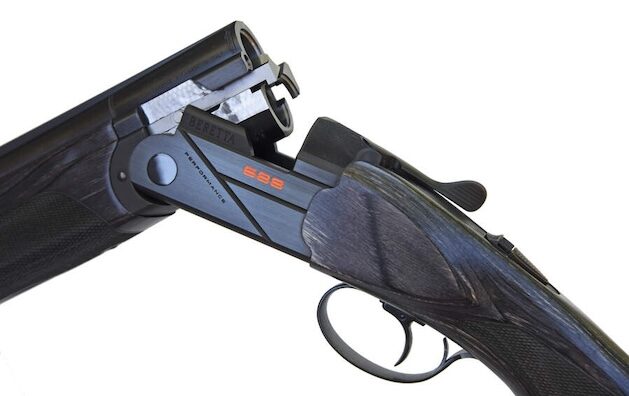Offering impressive specification and extensive adjustability at a competitive price, this new Sporter looks good and shoots steadily, as Michael Yardley discovers
Beretta 688 Performance
Here I look at a new competition model from Beretta – the 688 Performance. It has 30in Steelium barrels (there is a 32in option), 3in chambers, high-performance steel proof and Optima HP multichokes, and weighs in at 8½lb: substantial but typical of modern Sporters. The selective single trigger is adjustable both for position and breaking weight. There is an adjustable comb too, as well as the facility to alter the gun’s balance (out of the box it is on the hinge point, which is welcome but uncommon). Trigger-pulls are set around 4lb.
The Beretta 688 Performance is not Beretta’s entry level Sporter – the Silver Pigeon I Sport covers that base at about £1,000 less – but it is clearly aimed at those who want a serious clay-busting machine at a not too-eye-watering price point and yet still crave some ‘bells and whistles’. It offers adjustability for drop, comb offset, length of pull (by pad change), balance and choking. For those who enjoy experimenting this may be just the ticket. The 688 might also serve for wildfowling or on high-bird days, though the well-priced, traditionally stocked Silver Pigeon I may be better suited to that sort of double duty.
An essentially plain black action (save here for some shallow decorative lines cut into the otherwise flat action walls) is always a good look for a competition gun. The caps at the hinge point are flat too but contrast with the body of the action because of finer polishing, while the fences are unfussy and stippled to reduce reflection. The 688 model number is highlighted boldly in orange. This is a little brighter than my taste, as is the orange Beretta trident on the action base. Overall, though, it is a smart design and complements the dark grey-blue of the laminated woodwork. The laser-applied chequering is well done with good-sized diamonds and put inside panels with rounded corners. It’s modern in looks but not excessively so.
The gun comes to the face and shoulder well, reminiscent of the older, heavier, silver-actioned 682, which had a similar handling dynamic that evolved significantly over the years. Many of my generation cut their competition teeth with 682s, both the early silver-actioned guns and the blackactioned Super Sport (and later the 682 Greystone and Gold). They were and are just about indestructible. Older 682s were a little wider in the action than later ones (but not as wide as the test gun) and barrels also tended to be heavier (the action width has gone from 40mm to 39mm to 42mm now). There has been considerable change to the look and overall weight of the guns. Barry Simpson once did extremely well with a 30in 680 model (the beautifully made progenitor of the 682) fitted with 686 wood that may have inspired future developments.
Apart from slightly changed action dimensions, new cosmetics and improved stock shapes, the big difference in the latest 688 (and 686) compared to early 68 series guns is the barrel geometry. The test gun has Steelium barrels, which are essentially Beretta nickel-chrome-molybdenum barrels made by deep drilling and cold hammer forging with the metal going through a vacuum distension process too. Forcing cones in these barrels are 80mm (longer than average) and combined with long Optima chokes (which replaced Mobil chokes on earlier models) and an 18.6mm bore. To dispel potential confusion, Beretta also offers Steelium Pro X in the SL2 now. It features a long (430mm) taper bore with a short parallel section before the choke and extended 90mm Optima XP choke tubes. Steelium Pro in the DT11 is similar but with an even longer (450mm) taper and shorter 70mm Optima HP chokes. Steelium Plus as seen in the 694 has a partially tapered (320mm) bore combined with Optima HP chokes. For the record, Optima and Optima HP chokes are not interchangeable. (More on chokes here.)

Offering significant adjustability, this gun is a good choice for those who enjoy experimenting
Beretta 688 Performance technical
The 688 Performance traces its ancestry via the models 55, 680, 682 and 682 Gold E (which, circa 2000, introduced wider-bored barrels with elongated forcing cones, and longer Optima chokes). Mechanics remained basically the same: trigger-plate design, trunnion hinging and lock-up by means of conical bolt ends engaging circular bites in the monobloc either side of the top chamber mouth. But the 688 does have some interesting changes. The action body is wider, as noted, and the position of the hold-open catch (the little sprung stud-like protrusion at the top of the action face) has been moved centrally to improve closing of the action. Barrels on the 688 are Steelium, as discussed, with an 18.6mm bore and extended forcing cones and chokes (70mm inside the barrel and 14mm knurled section protruding). The use of laminate wood is significant too because of its extra weight and different vibration characteristics.
Shooting impressions
This test gun is a little heavier than my preference for recreational clays but exactly what many modern competition shots prefer. The laminate stock and adjustable comb add weight to the rear, counterbalancing the barrels, and the widened action of the 688 puts more mass in the middle too. I missed a couple of birds initially, then put in a bit more deliberate muscular effort and broke everything. The 10-8mm ventilated sighting rib was excellent. I also liked the white bead, although the deep palmswell grip was slightly too large for my hand and the adjustable comb is quite thick. The fore-end, though good, might have been a little wider. There was very low perceived recoil. Lyalvale 24g and 28g No 7½ test cartridges smoked most targets with 1/2 and three-quarter chokes. Like many Beretta Sporters, the 688 was steady and predictable to shoot. The much-evolved gun offers impressive specification, useful adjustability and a price that does not scare.
Verdict
Steady and predictable





